Izium - Overview
Izium, also known as Izyum, is a city in Ukraine standing on the banks of the Siverskyi Donets River in the southeastern part of Kharkiv Oblast, about 125 km from Kharkiv.
The population of Izium is about 45,000 (2021).
The phone code - +380 5743; the postal codes - 64300-64318.
History of Izium
Foundation of Izium
Izium is an integral part of the region, which in the historical literature is called Sloboda Ukraine. Favorable natural and geographical position made Izium a place where numerous events that played an important role in the history of the region took place.
In the 11th-12th centuries, within the boundaries of today’s city, battles took place between the Russian princes and the nomadic Polovtsians. The Russian guard patrol at the Izium ford across the Siverskyi Donets is mentioned in written sources for 1571.
In 1637, Tsar Mikhail Fedorovich, the first Russian Tsar from the Romanov dynasty, in his letter pointed out the need to build a town near the Izium barrow. The first mention of the village dates back to 1639. In 1680, Tsar Fyodor (III) Alekseevich issued a decree on the construction of a new town of Izium with a fortress and an earthen rampart. In 1681, a large fortress was built, which formed a new settlement. Thus, 1681 is considered the year of foundation of Izium.
The construction was carried out under the leadership of Grigory Donets-Zakharzhevsky, a colonel of the Kharkiv Sloboda Cossack Regiment (1668-1691) and the Izium Sloboda Cossack Regiment. The fortress became part of the Izium defensive line - a system of fortifications of the Tsardom of Russia with a length of about 530 kilometers. It was built to protect the Russian state from the Nogai-Tatar raids in 1679-1680 and was located on the territory of the present Belgorod Oblast of Russia and Kharkiv Oblast of Ukraine.
More historical facts…
In 1685, Izium became a regimental town of the Izium Sloboda Cossack Regiment, to which 13 surrounding towns and settlements were subordinate.
In 1708, Izium became part of the Azov Governorate of Russia. As a result of the administrative reform of 1765, Izium received the status of a town, the Izium Sloboda Cossack Regiment was transformed into the Izium Hussar Regiment, and the territory of the regiment was turned into the Izium Province of the Sloboda-Ukrainian Governorate. In 1780, the town became the center of the Izium district of the Kharkiv Governorate. In 1785, the population of Izium was 4,301 people, in 1897 - 13,108.
Izium in the 20th - 21st centuries
In 1910, the Kharkiv-Donbass railway was laid through Izium. In 1915, the German company “Karl Brandt” built the Main Izium Railway Workshops (since 1929 - a steam locomotive repair, and since 1961 - a diesel locomotive repair plant). In 1916, according to the order of Emperor Nicholas II, the construction of the first optical glass plant in the Russian Empire began in this town. In 1917, the population of Izium was about 18 thousand people.
From 1917 to 1921, during the Civil War on the territory of the former Russian Empire, the power in the town changed several times. In 1923, the optical glass plant resumed production, which became the beginning of the development of the entire branch of optical glassmaking in the USSR.
During World War II, Izium repeatedly became a battlefield. From the end of October 1941, the front line passed through the town and the Izium district. At the end of May 1942, the battles ended with the encirclement of the Soviet troops of the Southwestern Front. On June 23-24, 1942, Izium was occupied by advancing German troops. On February 5, 1943, the Red Army regained control of the town. During the war years, more than 12 thousand residents of Izium fought on the fronts in the ranks of the Red Army; about half of them were killed in action.
After the war, active housing construction began and the city’s infrastructure was expanded. In 1952, Izium had a locomotive repair plant, an optical glass plant, a meat processing plant, a brewery, an oil mill, a brick factory, a local history museum, 5 schools, 5 clubs, and 6 libraries.
In 1969, a new building of the city executive committee, the Yubileiny restaurant, the Kremenets hotel and the post office were built. In 1979, in the eastern part of the city for the 1980 Olympics, the Yunost Palace of Culture and the Sports Palace with a swimming pool were built.
In 1985, a large memorial to the Second World War was built on Mount Kremenets. On its territory there is a monument “Grieving Mother”, the tomb of the Unknown Soldier and the Square of Memory. On the central alley leading to the memorial, military equipment is installed. From 1959 to 1989, the population of Izium increased from 37,595 to 64,334 people.
As of 2008, Izium was the center for the production of optical glass and one of the centers of optical and optoelectronic instrumentation in Ukraine. The city had an instrument-making plant, an optical-mechanical plant, a diesel locomotive repair plant, several enterprises in the food industry and the production of building materials (bricks and products from polystyrene concrete). In September 2013, after five years of inactivity, the brewery resumed production.
In 2016, in the course of the implementation of the Law on Decommunization, Soviet Square in Izium was renamed John Lennon Square, mainly in connection with his pacifist statements.
From April 1 to September 10, 2022, Izium was occupied by Russian troops, a significant part of the city’s infrastructure was destroyed.
Izium views
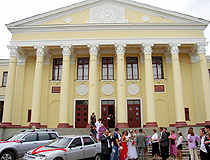
Palace of Culture in Izium
Author: Jason Cammarano
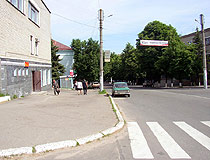
Summer in Izium
Author: Jason Cammarano
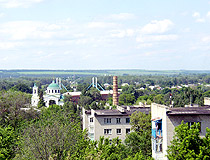
Izium cityscape
Author: Jason Cammarano
Izium - Features
There are several versions of the origin of the city’s name. According to one of them, it comes from the Tatar word “guzun”, which translates as a river ford. The Izium ford was known long before the foundation of the city. According to another version, it originates from the Tatar name of the mountain Kremenets “Uzun-kurgan”, which means an elongated mountain.
There is also a version that the name of Izium comes from the word “uzum” or “izyum” (raisins), since grapes were grown in its vicinity in the 17th century. The coat of arms of Izium was given to the town by Catherine II, the Empress of Russia, in 1781, with the following description: “In a golden field there are three grapevines showing the very name of this town and that this fruit is grown in its vicinity.” Since the grape color was not mentioned, at different times red, green and blue grapes were depicted on the coat of arms of Izium.
Izium is surrounded by dense forests. The area of forests around the city is about 600 square kilometers. The Oskil reservoir, one of the largest in eastern Ukraine, is located about 9 km east of it. The City Day of Izium is celebrated on the second Saturday of June.
The city is located in the temperate climate zone, characterized by warm summers. The warmest month is July with an average temperature of plus 20.6 degrees Celsius, the coldest month is January with an average temperature of minus 5.6 degrees Celsius.
Main Attractions of Izium
Kremenets Mountain. It is the best place to start exploring Izium. A beautiful panorama of the city and surrounding places opens from its top. The height of Kremenets Mountain is 218 meters above sea level, which makes it the highest point in the Kharkiv region. In fact, Kremenets is not a mountain at all, but a hill formed by chalk layers, sands and sandstones of the Upper Cretaceous and Jurassic periods. In places where the rock comes to the surface, you can see the fossilized remains of ancient flora and fauna.
A lot of historical events and legends are associated with this place. At the foot of Kremenets, the famous Izium Way passed - the road that the Tatars used when raiding the Russian principalities. At its top there was a Tatar fortress - kermen, which, in all likelihood, gave the name to the mountain.
Initially, not the whole hill was called Kremenets, but only its top. Later, the Cossacks set up their guard patrols on the mountain. A fortress that was built here gave rise to the future city of Izium. At the end of 1960s, a park was laid on the south-eastern part of the mountain, a lot of exotic trees and bushes were planted there.
Today, on Kremenets Mountain you can see an exposition of ancient Scythian kurgan stelae, a memorial complex to those who died during the Second World War and several other memorials.
Holy Transfiguration Cathedral. This picturesque five-domed cathedral is one of the oldest stone buildings not only of Izium, but of the entire Sloboda Ukraine, which has come down to our days from Cossack times. The church was built in the Ukrainian baroque style in 1682-1684. It is the high-rise dominant of the old (now central) part of Izium. Built almost simultaneously with the izium fortress, it was an integral part of the fortifications. The architectural ensemble of the Izium center was formed around it later. Staroposhtova Street, 12.
Holy Ascension Cathedral (1826). Built in the style of classicism, it was the only church in Izium where divine services did not stop during the Soviet period. It is known far beyond Izium because the miraculous icon of the Peschanskaya Mother of God is kept here, to which pilgrims come from all over the Orthodox world. Moskovs’ka Street, 30.
Izium Museum of Local Lore - one of the oldest and most famous museums in the Kharkiv region founded in 1920. Today, the museum has more than 12 thousand exhibits including numismatic and archaeological collections, military awards of the Cossacks of the Izium regiment, paintings. Museum staff conduct interesting thematic tours, introduce visitors to antiquities and folk art. Soborna Street, 12.


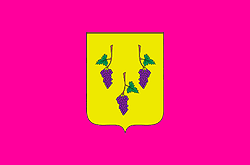
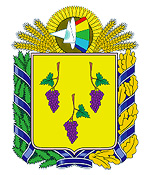



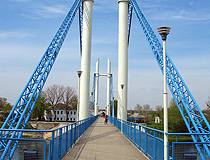
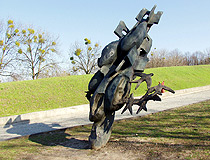
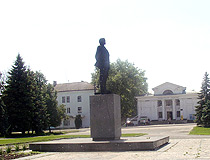
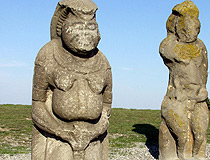
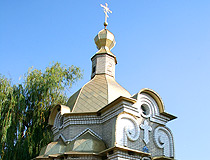
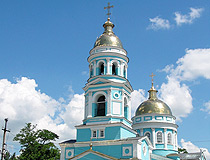
The comments of our visitors